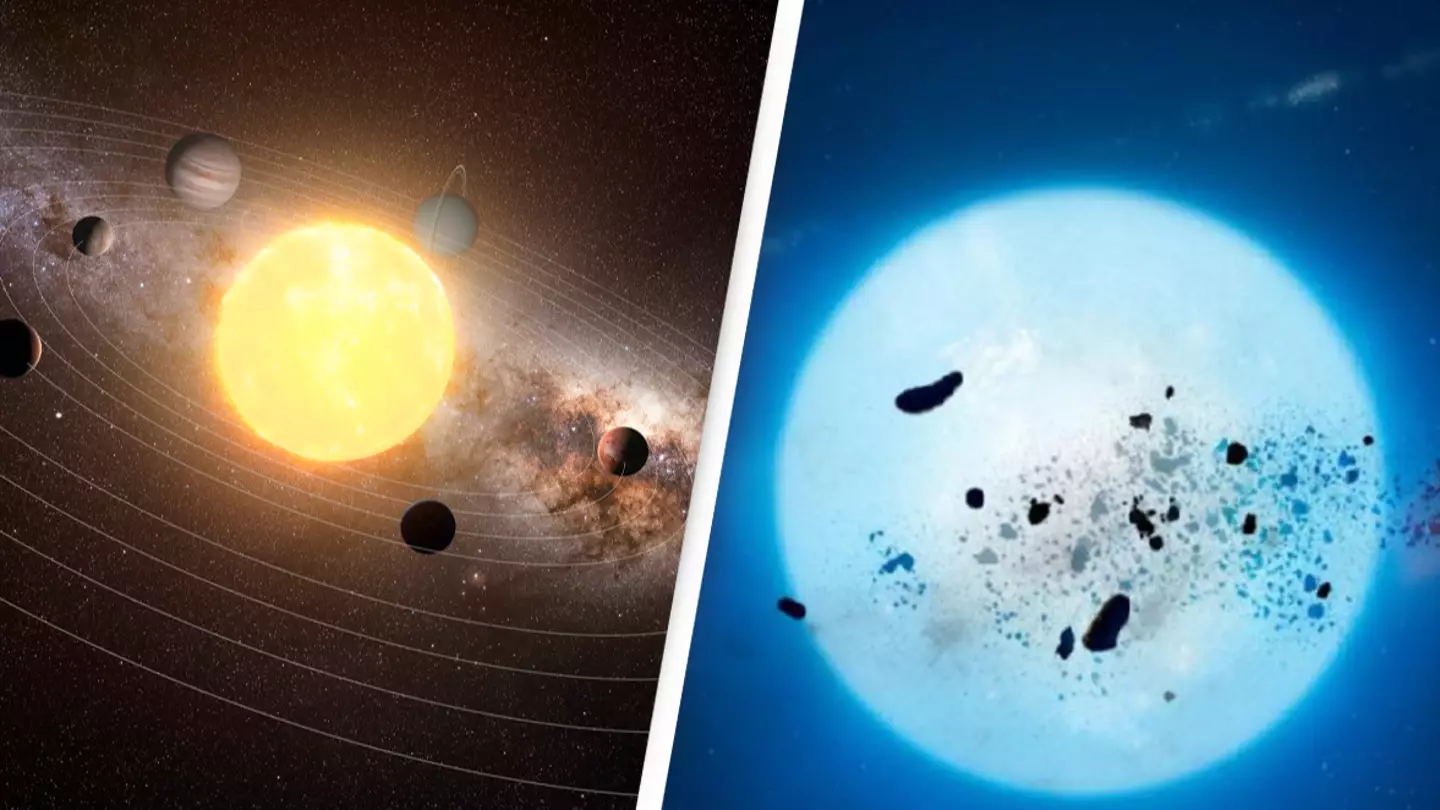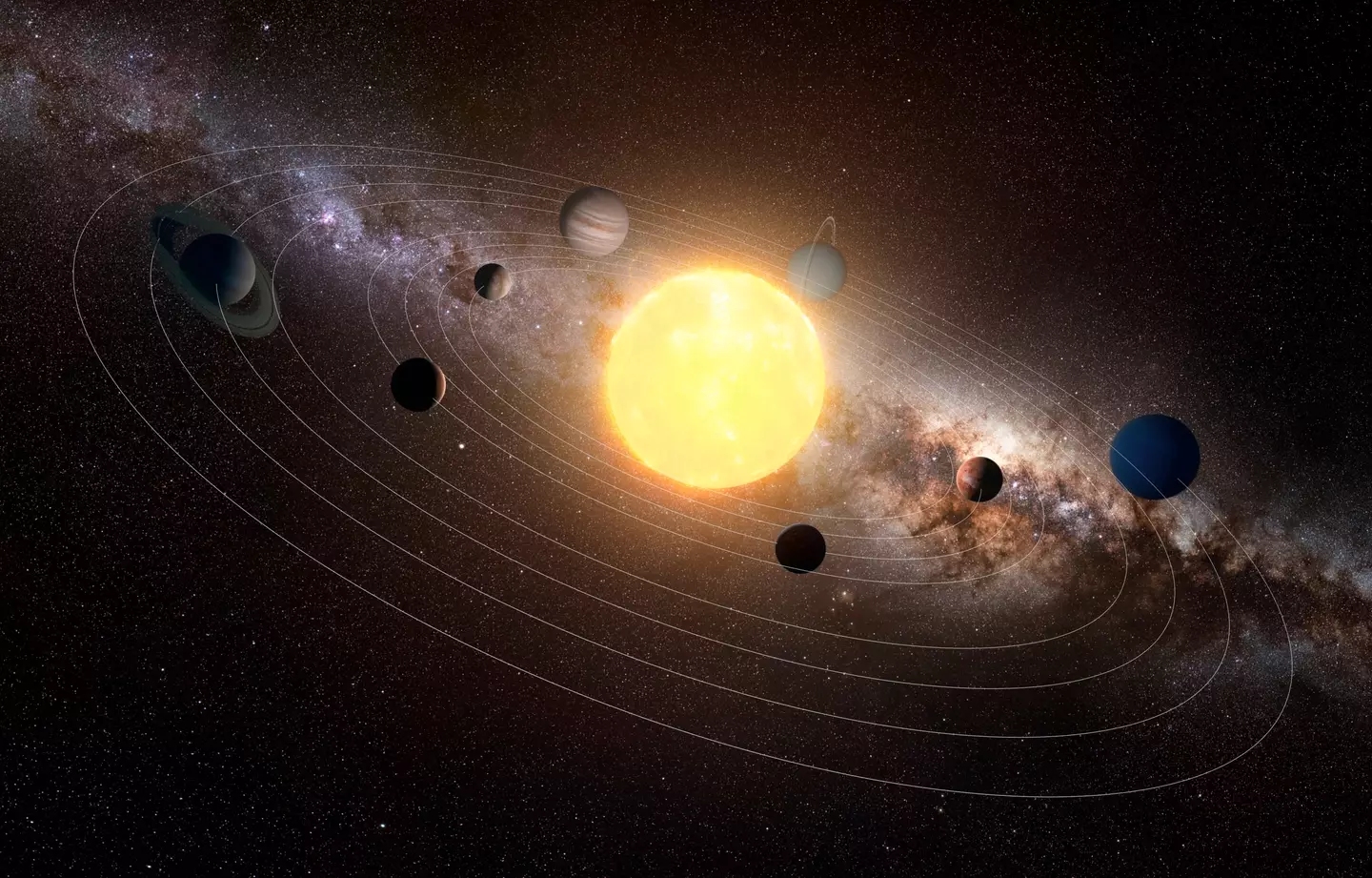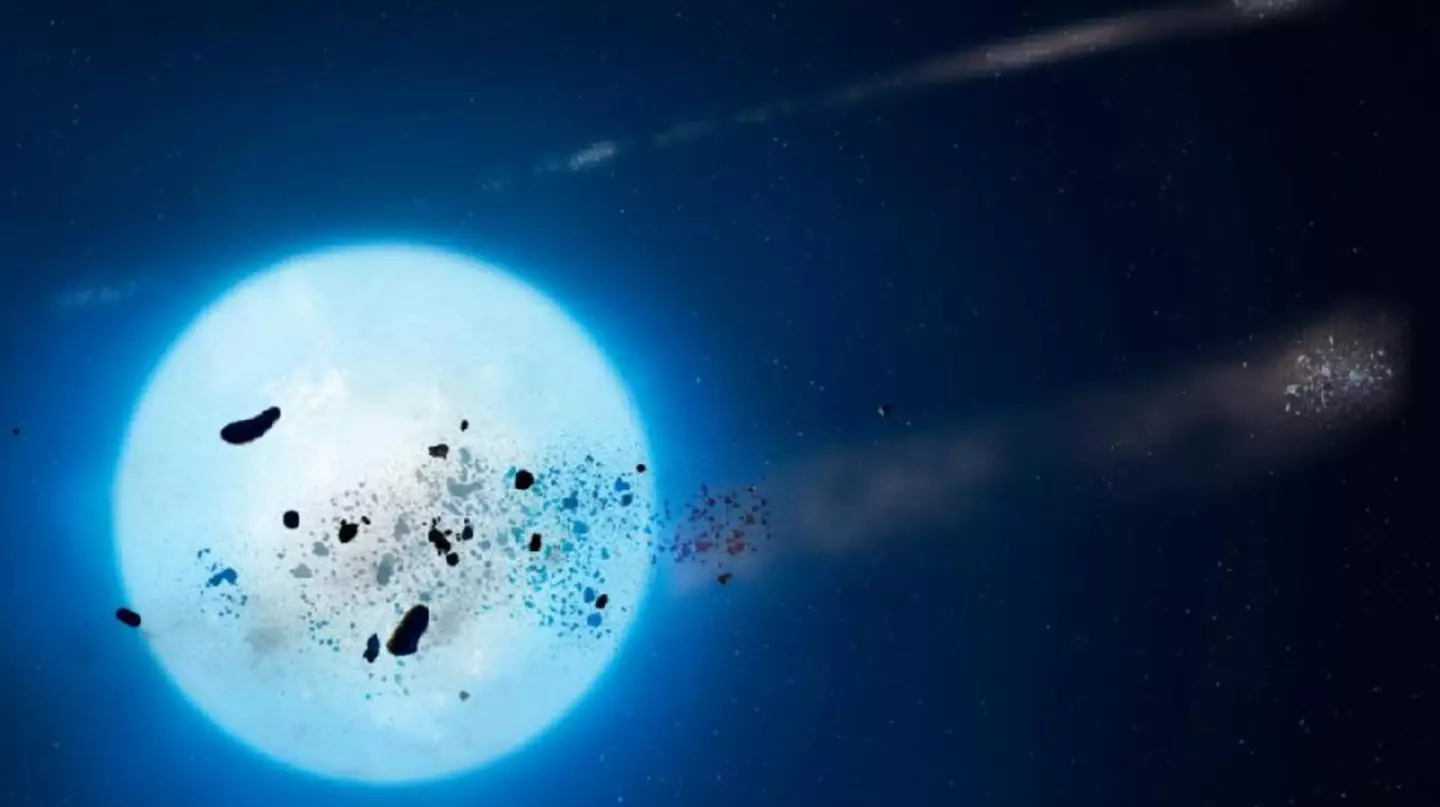
A new study looking at white dwarf stars has revealed that our solar system could die by being crushed and ground to dust.
I suppose if our home is going to be destroyed, it might as well be a thorough job.
The finding comes from scientists from the University of Warwick and other establishments, who investigated the fate of asteroids, moons and planets which pass close to white dwarfs.
Advert
A white dwarf is formed when stars like the Sun exhaust all of their nuclear fuel and expel most of their outer material, creating a planetary nebula with only the hot core of the star remaining.
Keen to find out what happens to planetary systems, like our solar system, when their host stars become white dwarf, the researchers analysed transits - aka dips in the brightness of stars caused by objects passing in front of them.
The team considered changes in the brightness of stars over 17 years, focusing on on three different white dwarfs which all behaved very differently.

While the first was 'well behaved' for a few years, the authors found evidence for a major catastrophic event around 2010. Another white dwarf appeared to dim at irregular intervals every couple of months before brightening again.
Advert
The third star studied by the team had been shown by Massachusetts Institute of Technology in 2015 to behave similarly to theoretical predictions, with vast variations in numbers, shapes and depths of transits. However, in the most recent study, the transits were gone completely.
The transits caused by debris have been found to be chaotic and disorderly, indicating that the fate of the bodies is, unfortunately, extremely catastrophic and violent.
Dr. Amornrat Aungwerojwit of Naresuan University, who led the study, explained: “Previous research had shown that when asteroids, moons and planets get close to white dwarfs, the huge gravity of these stars rips these small planetary bodies into smaller and smaller pieces.”

As the pieces continue to collide, they eventually grind into dust which then falls into the white dwarf.
Advert
When it comes to the fate of our own solar system, then, Professor Boris Gaensicke of the Department of Physics at the University of Warwick said: “The sad news is that the Earth will probably just be swallowed up by an expanding Sun, before it becomes a white dwarf.
“For the rest of the solar system, some of the asteroids located between Mars and Jupiter, and maybe some of the moons of Jupiter may get dislodged and travel close enough to the eventual white dwarf to undergo the shredding process we have investigated.”
Gaensicke added that while the researchers 'think we are on the right path in our studies, the fate of these systems is far more complex than we could have ever imagined'.
Topics: Space, Science, World News